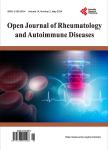Leukotriene-A4-Hydrolase and Basic Aminopeptidase Activities Are Related with Collagen-Induced Arthritis in a Compartment-Dependent Manner
白三烯A4水解酶和氨肽酶的基本活动是相关的,在一个车厢依赖性胶原诱导的关节炎作者机构:Laboratory of PharmacologyUnit of Translational Endocrine Physiology and PharmacologyInstituto ButantanSao PauloBrazil Department of PhysiologyInstituto de BiociênciasUniversidade de Sao PauloSao PauloBrazil
出 版 物:《Open Journal of Rheumatology and Autoimmune Diseases》 (风湿病与自身免疫疾病期刊(英文))
年 卷 期:2013年第3卷第4期
页 面:255-262页
学科分类:1002[医学-临床医学] 100214[医学-肿瘤学] 10[医学]
基 金:This study was financially supported by a Research Grant 09/17613-0 from FAPESP(Fundacao de Amparoà Pes-quisa do Estado de Sao Paulo,Brazil) P.F.S was recipient of a Productivity Grant 302533/2011-7 from CNPq(Conselho Nacional de Desenvolvimento Cientifico e Tecnologico,Brazil) M.T.M.was recipient of a CAPES(Coordenacao de Aperfeicoamento de Pessoal de Nivel Superior,Brasil)fellowship
主 题:Aminopeptidase Ether Hydrolase Bifunctional Enzyme Eicosanoids
摘 要:Objective: Previous study demonstrated the involvement of basic aminopeptidase (APB) activity in the development of collagen-induced arthritis (CIA). Two zinc dependent metalloenzymes (EC 3.***.11.6 and EC 3.***.2.6) are known to exhibit concomitantly APB and leukotriene-A4-hydrolase (LT-A4-H) activities. Influence of the interrelationship between both activities on arthritic processes, however, is presently uncertain. This study aimed to compare these activities in CIA. Methods: CIA was induced in rats and arthritis was assessed macroscopically. Ultracentrifugation was used to separate soluble (S) and solubilized membrane-bound (M) fractions from peripheral blood mononuclear cells (PBMCs) and synovial tissue (ST). Enzyme immunoassay was used to measure LT-A4-H activity, and Real Time Polymerase Chain Reaction was used for evaluating EC 3.***.11.6 and EC 3.***.2.6 gene expressions. Results: The existence of genes for EC 3.***.2.6 and EC 3.***.11.6 was demonstrated in the ST. Compared with control, LT-A4-H activity increased in synovial fluid (SF) and in S-PBMCs of CIA-arthritic and CIA-resistant and in M-ST of CIA-resistant, while it decreased in M-PBMCs of CIA-arthritic and CIA-resistant. In all these locations APB activity remained unchanged or inversely correlated with LT-A4-H activity. Conclusions: LT-A4-H and APB activities in joint-related samples are associated, for the first time, with EC 3.***.2.6 and EC 3.***.11.6 genes, exhibiting a compartment-dependent differential modulation of their specificity, efficiency and/or affinity or an inverse concurrent pattern. Changes in LT-A4-H activity have implications for development or resistance to arthritis in CIA model with a potential to be a diagnostic tool.



